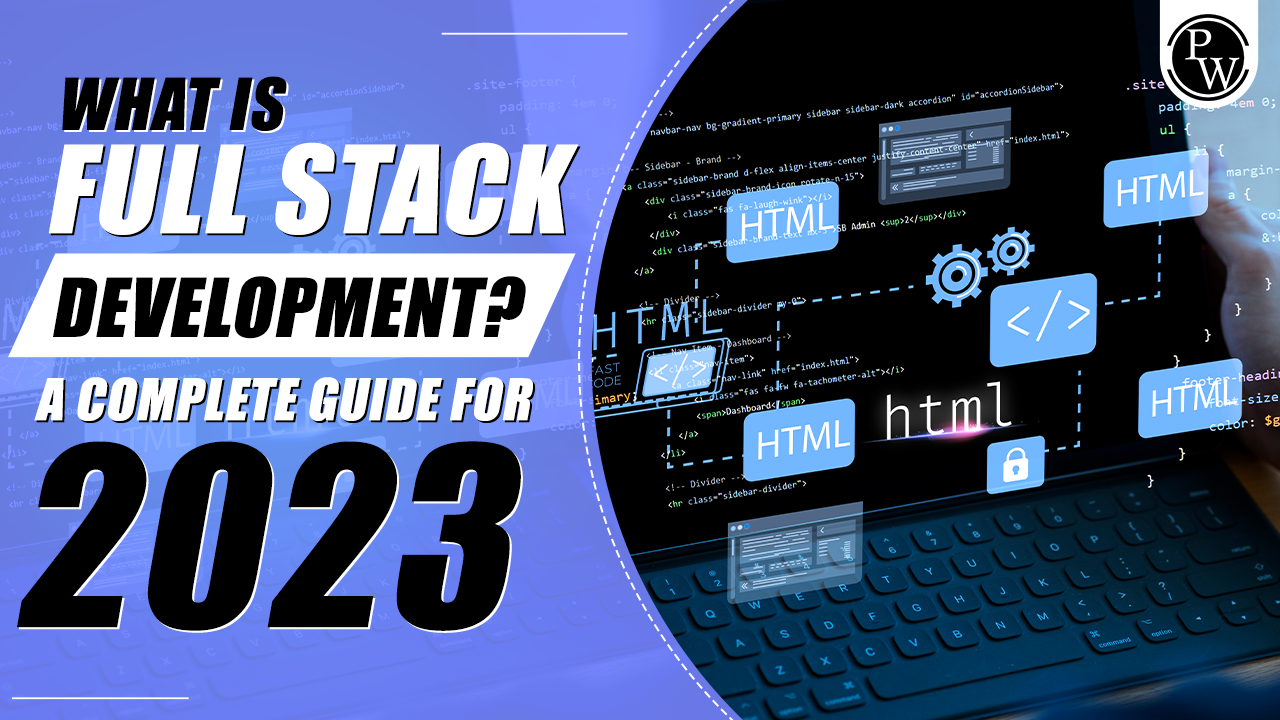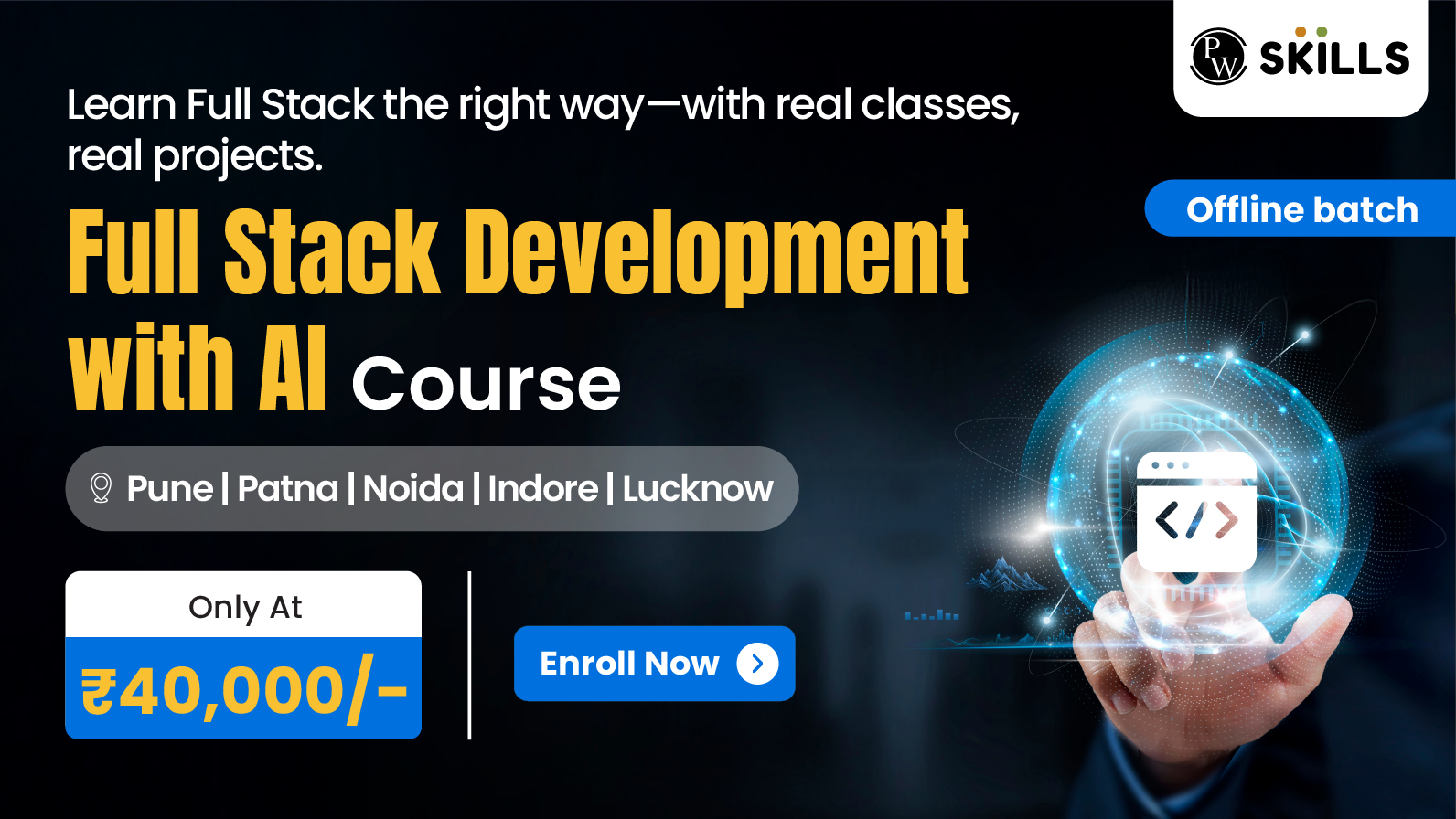Full stack development is the process of developing both front-end and back-end components of a website. Learn more about full stack development in this article!
Full Stack Development: A website has different components which can be classified as back-end i.e. server-side and front-end i.e. client side components. Full stack development is the process of managing both these types of components. In this article, we will study the differences between front-end and back-end technologies along with their advantages and uses.
Developing web applications is a complex process and full stack developers can create both front-end and back-end of the web applications. So, they are in great demand nowadays. Full-stack development courses can help you in understanding the diverse roles and responsibilities of a full-stack developer.

An Overview of The Full-Stack Development
Do you want to become a complete programmer? A full stack development course can help you become one! The basic details of full-stack development has been provided in the below table:
| An Overview Of The Full-Stack Development | |
| Particulars | Details |
| What is full stack development? | Managing both front-end and back-end components of a website is known as full stack development. |
| Popular Tech Stacks |
|
| Eligibility | 10+2 from any field with basic knowledge of computers and programming. |
| Average annual salary in India for a full stack developer | Rs. 7,14,000 per year |
| Popular front-end technologies | HTML5, CSS, JS, ReactJS, AngularVs, etc. |
| Popular back-end technologies | NodeJS, MongoDB, Python, Flask, etc. |
| Full Stack Development Course Tenure | 3 months to 1 year |
Also Check: Comprehensive Full Stack Developer Course Syllabus 2023
What Is Full Stack Development?
When you develop both the front-end and back-end of a website, you are doing full stack development. Front-end components of a website are usually those components that the clients see. So, they are also known as client-side components. Back-end components include server management and other technical processes that are typically managed by the software solution providers. So, they are known as server-side components. In full stack development, you develop both sides simultaneously and emerge as a complete software developer.
Full Stack Development Technologies
Front-end technologies like HTML, CSS, JavaScript, TypeScript, Angular, NodeJs, React, Vue, NextJS, etc. are popular these days. To become a professional full stack developer, you must master at least some of these technologies. Back-end technologies like Flask, Ruby on Rails, Phoenix, Asp.Net, Laravel, etc. are used to manage the server, back-end APIs, and databases. You learn some of these technologies when you enroll in a full stack development course. As a full stack developer, you must also be able to merge some of these technologies to create a fully-functional and responsive website!
Top Tech Stacks in Full Stack Development
A tech stack is a combination of frameworks, libraries, and software that run and manage your web applications. A tech stack is basically a combination of technologies that complement each other in the process of web development. While developing a website, you should opt for one tech stack i.e., combination of technologies that suits your project.
Some of the popular tech stacks are given below:
| Top Tech Stacks in Full Stack Development | |
| Tech Stack Name | Details |
| MEAN | MEAN refers to MongoDB, ExpressJs, Angular, and NodeJs. These four technologies make up the various layers of the MEAN tech stack. It is mostly used for developing web applications using JavaScript. |
| LAMP | LAMP stands for Linux OS, Apache Server, MySQL database, and PHP language. LAMP tech stack is used to develop both the front-end and back-end of a website. |
| MERN | MERN refers to MongoDB, ExpressJs, ReactJs, and NodeJs. It is similar to the MEAN tech stack but Angular gets replaced by React in this. |
| Django | Django tech stack consists of an advanced Python framework that is used to create responsible and secure websites. It is included as a full-tech stack as it offers all the tools to develop both front-end and back-end components of a website. |
| Ruby on Rails | Ruby on Rails is an open-source framework that is typically used for application development. It is based on Ruby which is an OOP (Object Oriented Programming) language that follows simple rules and syntax for coding. |
Benefits Of Full Stack Development
Here are the key benefits of full stack development:
-
Quick Updates
As full stack developers have a complete knowledge of the front-end and back-end technologies, they are able to release software updates a lot quicker. Initially, the full stack updates were slow but as young and energetic developers started acquiring full stack development skills, the updates were released a lot quicker.
-
Handles Both Ends
A full stack developer can manage client-side issues and server-side issues simultaneously. Also, a full-stack developer works such as software testers, QAs (Quality Analysts) and other software professionals to deliver high-quality and error-free applications.
-
Saves Resources
Full stack development can save both time and resources efficiently. It is so because full stack developers work on the back-end and front-end simultaneously. By managing the various processes in the app development in a parallel way, they reduce the costs associated with infrastructure. They also save resources as companies don’t have to hire multiple front-end and back-end developers to solve issues. Also, they deliver the project on time and prove to be quite resourceful for their respective organizations.
Limitations Of Full Stack Development
While gaining knowledge about the benefits of full stack development, you must also know about its limitations. These are some common limitations faced by engineers and programmers working as a full stack developer:
-
Unforced Delay Or Errors
With full stack web development, a single error on the front-end or back-end can cause the entire project to freeze. Full stack web development comprises time-intensive and technology-intensive activities. It may cause unforced delay while completing a project.
-
Staying at Par with Trends
As a full stack developer, you must keep learning about the latest tools and technologies being introduced in your own tech stack. So, staying on par with the recent developments and technologies can be quite challenging. It might also cause the delivery of projects to slow down.
-
Overload Of Work
Work overload is a common issue that most of the full stack developers face. It is inevitable as full stack developers have to manage all the processes from prototyping, designing, and deploying applications on their own. The workload can make things difficult and concentrating on other projects will be harder for them. Despite these challenges and limitations, you can learn to be a professional full stack developer. With experience, you will overcome these hurdles and prove to be a resourceful and efficient software developer.
Is becoming a full stack developer your dream job? If yes, you can join the full stack development course at PW Skills. At PW Skills, we offer complete courses to decode full stack development. We also provide projects and access to PW Lab so that you can gain hands-on experience in handling and delivering the project works. Along with that, you will also get guided by experienced full stack developers and mentors. Visit our portal today and get all the knowledge and resources to become a successful full stack developer!
Also Check: Top 30 HTML Interview Questions and Answers in 2023
FAQs
What are the 3 layers of full-stack development?
Full-stack development comprises three layers viz. front-end, back-end, and database. Front-end is associated with the presentation of a website whereas back-end is the logic which you deploy for creating it. Database layer is associated with the data storing capabilities of your web server.
Is full stack development in demand?
Full stack development is in great demand these days. It is so because every business tries to get online by launching their websites and applications. They want companies to develop apps and websites quickly for them. So, software companies insist on hiring full stack developers that can handle all aspects of development by themselves.
Can I learn full stack in 3 months?
Full stack development can be learnt in 3 months if you already have some programming skills. However, you might need more time to learn if you are fresher in this field.
Who is eligible to learn full stack development?
Anyone who has completed 10+2 and has a basic knowledge of programming and computers can join a full stack development program or course.
What is the salary of a front-end developer in India?
The salary of a front-end developer varies from Rs. 1,20,000 to Rs. 11,30,000 per year depending upon skills and experience.





